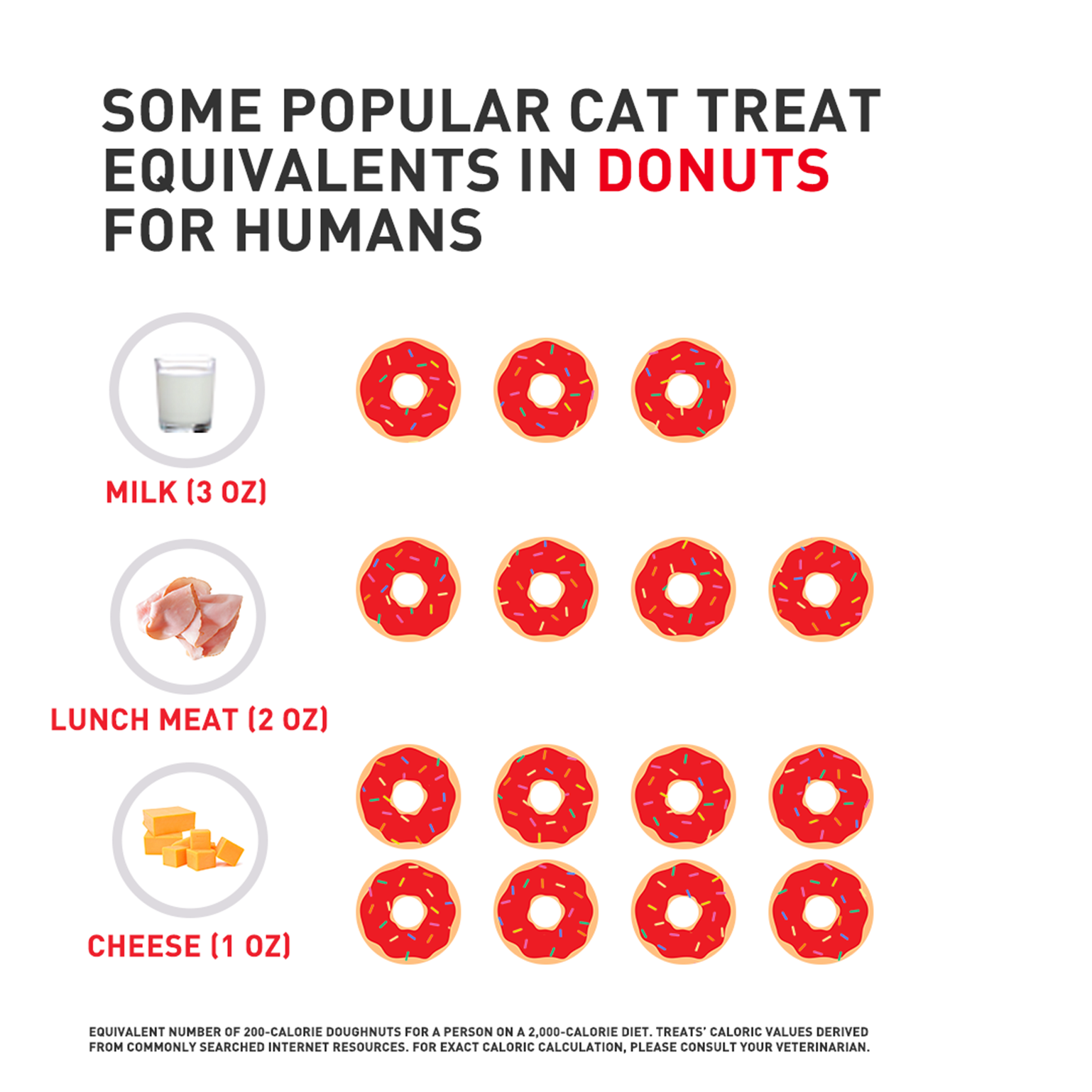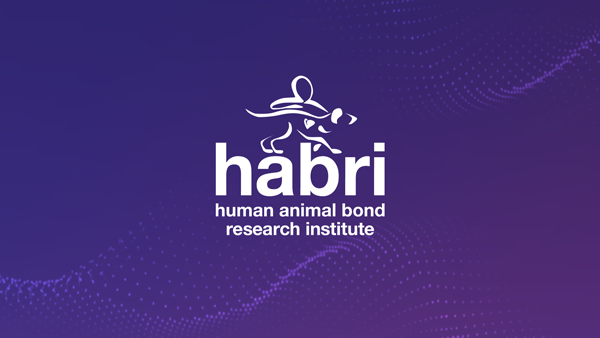Every pet owner has a special bond with their animal. From going on walks to spending time on the couch together, there are so many ways the human-animal bond is shared and experienced. Many pet owners[1] believe that regularly giving treats to their pets plays a big role in strengthening the human-animal bond. The simple yet meaningful interaction of treating – giving pets special snacks or rewards – enhances the bond between cat and dog owners and their pets.
Research shows that cat and dog owners feed their pet treats to show love to their pet, make them happy, and strengthen the bond[2]. It brings pet owners joy to know that treats make their pets happy[3].
There is more to treating than showing love. The right treats can also support the benefits of a pet’s existing nutritional plan[4] and can serve as positive reinforcement during training sessions[5]. According to a Royal Canin survey of pet owners, treating can be used as a functional benefit for managing pet behavior. Training represents a shared activity and is great way to engage with your pet, improve desired pet behavior and strengthen the human-animal bond[6].
Social, cognitive and physical enrichment is beneficial for our pets. Positive reinforcement or reward-based training techniques using treating have been shown to be associated with less stress-related behaviors and improved welfare[7].
Why do you treat your pet?
Pets are overwhelmingly considered as members of the family[8], and, just like when shopping for human food, pet owners consider nutritional value as a top concern when selecting the right treats for their pet[9].
While treating pets can strengthen the bond between owners and their animal companions, it’s essential to prioritize their nutrition and health when offering treats to help ensure they maintain a healthy weight and remain compliant to their nutritional needs.
Royal Canin Treats provide safe and effective treats for cats and dogs diagnosed with lower urinary tract disease, gastrointestinal upsets, sensitivities to food or for those pets that need weight management.
Treat them right by learning more about your pet’s health and nutrition.
Table of Contents:
1. The Importance of Strong, Healthy Human-Animal Bonds
2. Benefits of the Human-Animal Bond
The Importance of Strong, Healthy Human-Animal Bonds
The Human Animal Bond Research Institute (HABRI) has teamed-up with Royal Canin to bring you trusted information on the importance of the human-animal bond, and ways to help you and your pets spend quality time together.
You love your pet, but did you know that the bond you share with them can improve your health and wellbeing?
Curious about the Human-Animal Bond?
The human-animal bond is the mutually-beneficial and dynamic relationship between people and animals that is influenced by behaviors that are essential to the health and well-being of both. Put simply, when we take great care of our pets, they will take great care of us!
People are happier and healthier in the presence of pets, and there’s strong scientific research which shows owning and interacting with companion animals can decrease blood pressure[10], reduce stress[11], increase social connection[12], and enhance feelings of emotional well-being[13].
Health Benefits of the Human-Animal Bond
The human-animal bond has many health benefits, including:
Social Support
Pets serve as a source of social and emotional support for their owners[14], which is considered vital for good mental health. The nonjudgemental, unconditionally positive presence of pets helps people feel supported no matter what they might be going through[15], which gives us the confidence to be our best selves. One study found that support provided by pets contributed to greater self-esteem, conscientiousness, extroversion, and overall well-being among pet owners compared to non-owners.
People feel less lonely with pets by their side. 85% of pet owners agree that pets help reduce loneliness, according to a nationally representative survey commissioned by HABRI and Mars Petcare. One study of older adults living independently found that pet owners were 36% less likely than non-pet owners to report loneliness[16].
Research shows that living with pets can help to facilitate more social contact in the community[17]. Pet owners are significantly more likely to get to know people in their neighborhood than non-owners, which suggests pet ownership acts as a catalyst for social interaction[18].
Our animals offer us a sense of security and stability in times of need. The routines associated with basic pet care – such as walking, feeding, grooming, training and playing – can help instill a sense of purpose and structure[19][20]
Stress Reduction
Our pets comfort and support us, reducing feelings of stress and helping us recover more quickly from stressful events. Research shows that pets can help people develop positive coping mechanisms to deal with stress[21], especially during difficult times[22]. Interviews with owners show that pets help manage negative feelings through distraction from upsetting experiences and providing encouragement for different activities[23].
In addition to pets helping us manage our feelings and emotions, research also shows that pets positively influence biological indicators of stress in humans. A study of cardiovascular reactivity shows that having a pet in our lives can help us recover faster from a stressful event, and that cat ownership is associated with lower resting baseline heart rate and blood pressure[24]. Interacting with dogs has also been shown to reduce cortisol, which is known as the body’s stress hormone[25].
Healthy Aging
Having a pet can support older adults as they age, helping them maintain a routine and encourage daily physical activity[26]. Research has found that by serving as a soothing presence and a source of motivation for activity and routine, pets can facilitate behaviors and thoughts in older adults that enhance coping with pain[27] and reduce depression[28].
The social, physical, and emotional benefits of pet ownership are all factors that influence positive brain health over time. Pet ownership among older adults is associated with improved cognitive status compared to those who do not keep pets[29]. One study on the cognitive benefits of pets concluded that owning a pet can reduce one’s brain age by as much as 15 years[30].
Physical Health
Walking with your pet is a great way to strengthen the human-animal bond, provide your pet with mental stimulation, and stay physically active. One study examining new dog owners found that getting a dog leads to an increase in time spent walking[31]. On average, dog owners walk more minutes per week than non-owners, and more dog owners are more likely to meet recommended levels of weekly physical activity compared to people who do not own dogs[32].
Pet ownership has a moderating effect on heart rate and blood pressure, contributing to a decreased overall risk of death due to a heart attack or other cardiovascular events such as stroke[33]. The American Heart Association conducted a review of evidence on pet ownership and cardiovascular risk, concluding that pet ownership, particularly dog ownership, is likely to have a causal role in reducing risk of cardiovascular disease[34].
Interested in finding ways to stay active with your dog? Learn more here.
What You Can Do
Knowing about the science of the human-animal bond, you may be wondering what you can do to protect and strengthen the special bond you share with your furry family member.
Treat them right
Please talk to your veterinarian and make sure your pet is getting the right nutrition. This includes feeding the proper treats for your pet’s unique nutritional needs.
With holiday season upon us, it’s important to stay conscious of our pet’s diet to keep them at a healthy weight. Just like us, extra treats can lead to extra weight gain.

According to experts in veterinary medicine, treats should be limited to no more than 10% of your pet’s recommended total daily caloric intake. Seemingly small treats from the table can put your dog or cat at potential risk of obesity.
Without proper planning, treats may compromise the efficacy of the veterinary-exclusive diet you’ve selected for your pet! Royal Canin works hard to develop specialized treats to supplement your pet’s nutritional needs, including treats that are safe and effective for cats and dogs diagnosed with lower urinary tract disease, gastrointestinal upsets, sensitivities to food or for those pets that need weight management.
While it may be tempting to sneak the occasional piece of human food to our eager companions, providing them with appropriate treats is in their best interest, especially for pets diagnosed with certain conditions, food sensitivities or for those that need weight management.
Talk to your veterinarian about the proper treat options for your pet and your pet’s nutrition to treat them right!
For Veterinarians
As veterinarians, you know that every pet is unique, and so are their nutritional needs.
Royal Canin therapeutic diets help maintain the health of dogs and cats with diagnosed health problems. After a pet begins a therapeutic diet, many pet owners continue to feed their pets treats and do not realize that those treats may compromise the efficacy of their veterinary-exclusive diet you’ve recommended.
Royal Canin offers a comprehensive line of treats that are compatible with many of their scientifically formulated therapeutic diets, enabling pet owners to treat their pets and support their unique human-animal bond without compromising their pet’s health. This includes treats that are safe and effective for cats and dogs diagnosed with lower urinary tract disease, gastrointestinal upsets, sensitivities to food or for those pets that need weight management.
You can support the bond between your clients and their pets through helping them navigate their pet’s nutritional needs, including ensuring that they are treating them right.
Learn more about Royal Canin Treats today!
To learn more about which Royal Canin treat is appropriate for your patient, contact a Royal Canin Nutrition Advisor today at 1.888.213.4486.

Citations
[1]Nielson, S. A., Khosa, D. K., Verbrugghe, A., & Clow, K. M. (2024). Talking treats: A qualitative study to understand the importance of treats in the pet-caregiver relationship. Preventive Veterinary Medicine, 226, 106163.
[2] Nielson, S. A., Khosa, D. K., Clow, K. M., & Verbrugghe, A. (2023). Dog caregivers’ perceptions, motivations, and behaviours for feeding treats: A cross sectional study. Preventive Veterinary Medicine, 217, 105971.
[4] Morelli, G., Marchesini, G., Contiero, B., Fusi, E., Diez, M., & Ricci, R. (2020). A survey of dog owners’ attitudes toward treats. Journal of applied animal welfare science, 23(1), 1-9.
[5] Calancea, B. A., Daina, S., & Macri, A. (2024). The science of snacks: a review of dog treats. Frontiers in Animal Science, 5, 1440644.
[6] Bender, Yana, Juliane Bräuer, and Stefan R. Schweinberger. “What makes a good dog-owner team?–A systematic review about compatibility in personality and attachment.” Applied Animal Behaviour Science 260 (2023): 105857.
[7] de Castro, Ana Catarina Vieira, et al. “Does training method matter? Evidence for the negative impact of aversive-based methods on companion dog welfare.” Plos one 15.12 (2020): e0225023.
[8] HABRI (2021) International Survey of Pet Owners & Veterinarians. Available online at: https://habri.org/international-hab-survey/
[9] Sprinkle D. (2019). Current top trends in pet treats and chews. Available online at: https://www.petfoodindustry.com/articles/8573-current-top-trends-in-pet-treats-and-chews
[10] Allen, Karen, Jim Blascovich, and Wendy B. Mendes. “Cardiovascular reactivity and the presence of pets, friends, and spouses: The truth about cats and dogs.” Psychosomatic medicine 64.5 (2002): 727-739.
[11] Crossman, M. K., Kazdin, A. E., & Knudson, K. (2015). Brief unstructured interaction with a dog reduces distress. Anthrozoös, 28(4), 649-659.
[12] Wood L, Giles-Corti B, Bulsara M. The pet connection: pets as a conduit for social capital? Soc Sci Med. 2005 Sep;61(6):1159-73. doi: 10.1016/j.socscimed.2005.01.017. Epub 2005 Mar 3. PMID: 15970228.
[13] Janssens, M., Eshuis, J., Peeters, S., Lataster, J., Reijnders, J., Enders-Slegers, M. J., & Jacobs, N. (2020). The pet-effect in daily life: An experience sampling study on emotional wellbeing in pet owners. Anthrozoös, 33(4), 579-588.
[14] Stammbach, Karin B., and Dennis C. Turner. “Understanding the human—cat relationship: human social support or attachment.” Anthrozoös 12.3 (1999): 162-168.
[15] Brooks, H. L., Rushton, K., Lovell, K., Bee, P., Walker, L., Grant, L., & Rogers, A. (2018). The power of support from companion animals for people living with mental health problems: A systematic review and narrative synthesis of the evidence. BMC psychiatry, 18, 1-12.
[16] Stanley, Ian H., et al. “Pet ownership may attenuate loneliness among older adult primary care patients who live alone.” Aging & mental health 18.3 (2014): 394-399.
[18] Wood, L., Martin, K., Christian, H., Nathan, A., Lauritsen, C., Houghton, S., … & McCune, S. (2015). The pet factor-companion animals as a conduit for getting to know people, friendship formation and social support. PloS one, 10(4), e0122085.
[19] Brooks, Helen Louise, et al. “The power of support from companion animals for people living with mental health problems: a systematic review and narrative synthesis of the evidence.” BMC psychiatry 18.1 (2018): 1-12.
[20] Brooks, Helen, et al. “Ontological security and connectivity provided by pets: a study in the self-management of the everyday lives of people diagnosed with a long-term mental health condition.” BMC psychiatry 16.1 (2016): 1-12.
[21] Schmitz, R. M., Tabler, J., Carlisle, Z. T., & Almy, L. (2021). LGBTQ+ people’s mental health and pets: Novel strategies of coping and resilience. Archives of Sexual Behavior, 50, 3065-3077.
[22] Mueller, M. K., & Callina, K. S. (2014). Human–animal interaction as a context for thriving and coping in military-connected youth: The role of pets during deployment. Applied Developmental Science, 18(4), 214-223.
[23] Ibid. Brooks
[25] Krause-Parello, C. A., Tychowski, J., Gonzalez, A., & Boyd, Z. (2012). Human–canine interaction: exploring stress indicator response patterns of salivary cortisol and immunoglobulin A. Research & Theory for Nursing Practice, 26(1).
[26] Peacock, M., Netto, J., Yeung, P., McVeigh, J., & Hill, A. M. (2020). Understanding the relationship between pet ownership and physical activity among older community-dwelling adults—A mixed methods study. Journal of Aging and Physical Activity, 28(1), 131-139.
[27] Janevic, Mary R., et al. “The role of pets in supporting cognitive-behavioral chronic pain self-management: Perspectives of older adults.” Journal of applied Gerontology 39.10 (2020): 1088-1096.
[28] Branson, Sandy M., et al. “Depression, loneliness, and pet attachment in homebound older adult cat and dog owners.” Journal of Mind and Medical Sciences 4.1 (2017): 38-48.
[29] Friedmann, E., Gee, N. R., Simonsick, E. M., Studenski, S., Resnick, B., Barr, E., … & Hackney, A. (2020). Pet ownership patterns and successful aging outcomes in community dwelling older adults. Frontiers in Veterinary Science, 7, 293.
[30] McDonough, I. M., Erwin, H. B., Sin, N. L., & Allen, R. S. (2022). Pet ownership is associated with greater cognitive and brain health in a cross-sectional sample across the adult lifespan. Frontiers in aging neuroscience, 14, 953889.
[31] Cutt, H. E., Knuiman, M. W., & Giles-Corti, B. (2008). Does getting a dog increase recreational walking?. Internvational Journal of Behavioral Nutrition and Physical Activity, 5(1), 17.
[32] Reeves, M. J., Rafferty, A. P., Miller, C. E., & Lyon-Callo, S. K. (2011). The impact of dog walking on leisure-time physical activity: results from a population-based survey of Michigan adults. Journal of Physical Activity and health, 8(3), 436-444.
[33] Qureshi, A. I., Memon, M. Z., Vazquez, G., & Suri, M. F. K. (2009). Cat ownership and the Risk of Fatal Cardiovascular Diseases. Results from the Second National Health and Nutrition Examination Study Mortality Follow-up Study. Journal of vascular and interventional neurology, 2(1), 132.
[34] Levine, G. N., Allen, K., Braun, L. T., Christian, H. E., Friedmann, E., Taubert, K. A., … & Lange, R. A. (2013). Pet ownership and cardiovascular risk: a scientific statement from the American Heart Association. Circulation, 127(23), 2353-2363.






